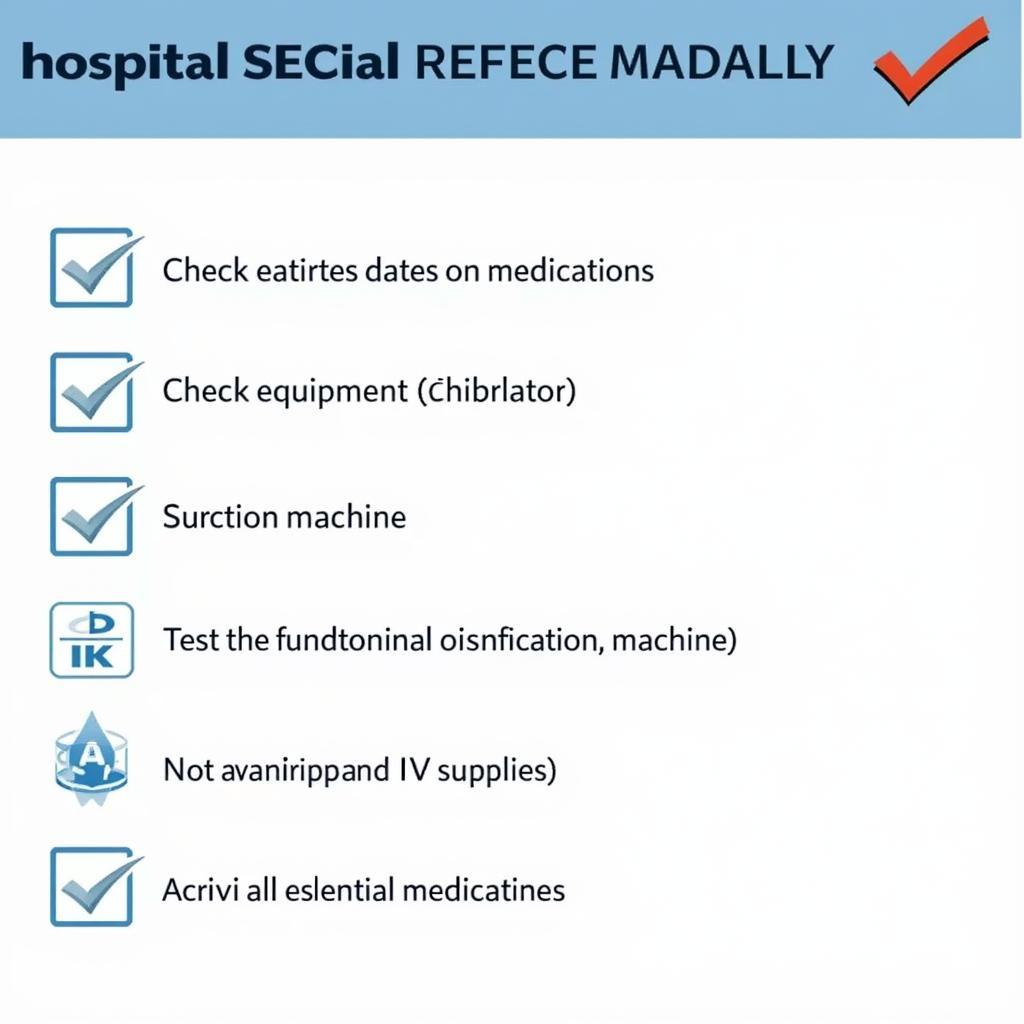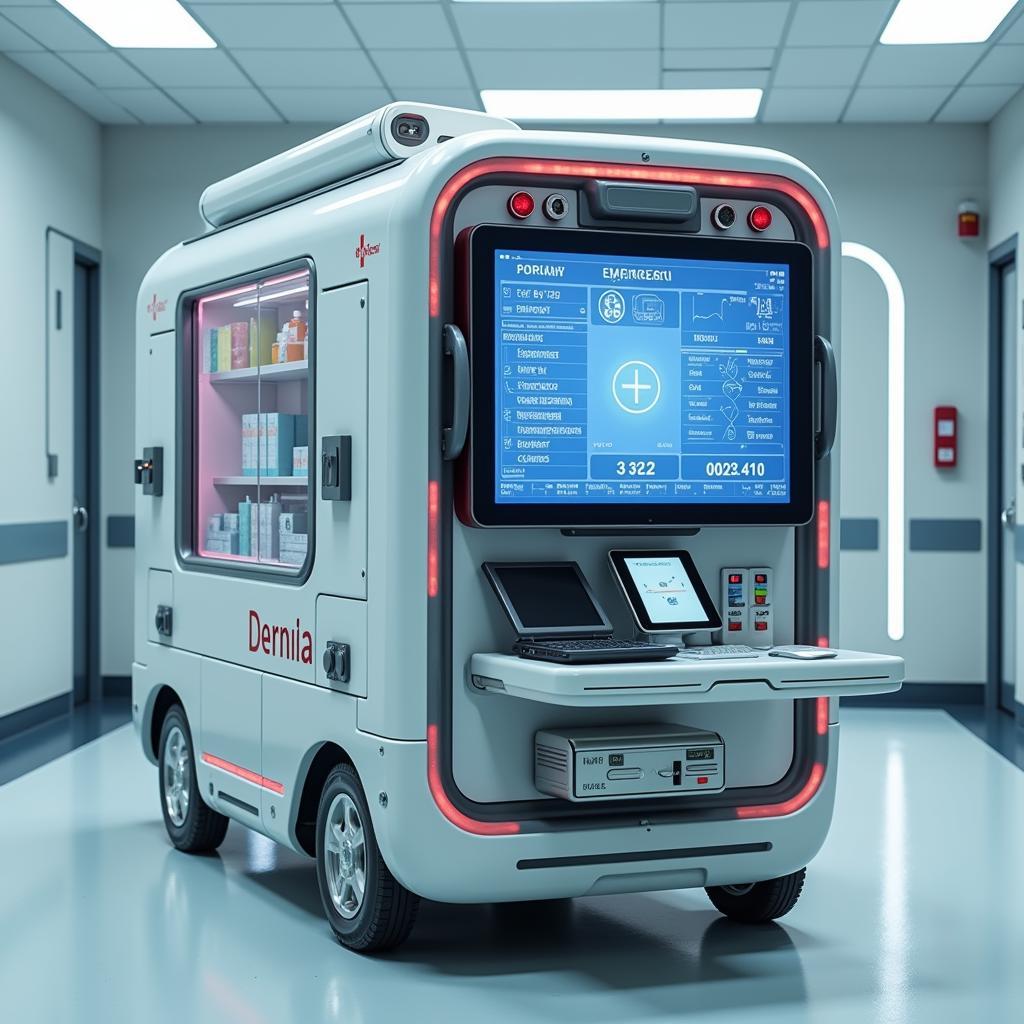A Hospital Emergency Cart, also known as a crash cart, is a critical piece of equipment found in healthcare facilities. It’s a mobile unit containing medications, supplies, and equipment needed for emergency medical interventions. These carts are strategically placed throughout hospitals to ensure rapid response in life-threatening situations. A well-stocked and organized emergency cart can be the difference between life and death. The purpose of this article is to explore the crucial role of the hospital emergency cart in modern healthcare.
The Importance of a Well-Equipped Hospital Emergency Cart
Hospital emergency carts are designed to be readily available and easily maneuverable. They are essential for responding to various medical emergencies, from cardiac arrest and respiratory failure to severe allergic reactions and seizures. The quick access to necessary supplies and medications provided by these carts allows medical professionals to administer immediate treatment, stabilizing the patient and potentially preventing irreversible damage.
Having a standardized emergency cart system ensures that healthcare professionals can quickly locate and utilize the required items, regardless of their location within the hospital. This standardization is vital for efficient and effective emergency response.
Just after completing their internal medicine residency, a new physician can find themselves in a high-pressure situation requiring the use of an emergency cart. Having a standardized setup allows for a quicker and more effective response. For more insights into residency programs, check out the garden city hospital program internal medicine residency.
What’s Inside a Hospital Emergency Cart?
While the specific contents may vary based on the hospital’s needs and the type of unit (e.g., adult, pediatric, intensive care), some standard items typically found in a hospital emergency cart include:
- Airway Management Supplies: Endotracheal tubes, laryngoscopes, suction equipment, oxygen masks.
- Medications: Epinephrine, atropine, lidocaine, sodium bicarbonate, and other life-saving drugs.
- Intravenous (IV) Supplies: IV catheters, fluids, tubing, and administration sets.
- Monitoring Equipment: Defibrillator, blood pressure cuff, pulse oximeter, electrocardiogram (ECG) machine.
- Other Essential Supplies: Syringes, needles, bandages, dressings, gloves, and other basic medical supplies.
Maintaining and Managing the Hospital Emergency Cart
Regular maintenance and inspection of the hospital emergency cart are paramount to ensure its readiness for any emergency. This involves:
- Regular Inventory Checks: Regularly checking for expired medications and replacing them promptly.
- Equipment Functionality Testing: Ensuring all equipment, such as the defibrillator and suction machine, is functioning correctly.
- Restocking Supplies: Maintaining adequate stock of all necessary supplies and medications.
- Proper Organization: Ensuring all items are organized logically and easily accessible.
 Hospital Emergency Cart Checklist: Ensuring Readiness
Hospital Emergency Cart Checklist: Ensuring Readiness
Who is Responsible for the Hospital Emergency Cart?
Designated personnel, typically nurses or trained medical technicians, are responsible for the upkeep and management of the emergency cart. They are trained to quickly assess the cart’s contents and ensure it’s always prepared for immediate use. This responsibility also includes documenting the usage of any supplies or medications from the cart.
Rural hospitals, such as blue hill memorial hospital blue hill me, often rely heavily on the efficiency of their emergency carts, given the potentially longer response times for specialized medical assistance.
The Future of the Hospital Emergency Cart
The hospital emergency cart continues to evolve alongside advancements in medical technology. We can expect to see increased integration of technology, such as electronic medication tracking and automated inventory management systems, in the future. These advancements will further enhance the efficiency and effectiveness of emergency response within healthcare settings.
For instance, smart emergency carts equipped with real-time inventory tracking could alert staff when supplies are low or nearing expiration, streamlining the restocking process and minimizing the risk of shortages. Even animal hospitals, like rumford animal hospital, can benefit from advanced emergency cart technologies.
 Future of Hospital Emergency Carts: Integrating Technology
Future of Hospital Emergency Carts: Integrating Technology
Conclusion
The hospital emergency cart stands as a vital lifeline in critical medical situations. Its importance cannot be overstated. Maintaining a well-equipped, organized, and regularly inspected emergency cart is crucial for providing timely and effective care, ultimately increasing the chances of positive patient outcomes. The ongoing advancements in medical technology promise an even more efficient and sophisticated future for this essential piece of medical equipment. When choosing a healthcare facility, consider their commitment to emergency preparedness, reflected in the readiness of their hospital emergency carts.
FAQ
-
What is the primary purpose of a hospital emergency cart? To provide immediate access to life-saving medications, supplies, and equipment during medical emergencies.
-
Who is responsible for maintaining the emergency cart? Designated personnel, usually nurses or trained technicians, are responsible for its upkeep.
-
What are some common medications found in an emergency cart? Epinephrine, atropine, lidocaine, and sodium bicarbonate are common examples.
-
How often should an emergency cart be checked? Regular checks, often daily, are necessary to ensure proper stocking and functioning equipment.
-
What are some future developments expected for emergency carts? Integration of technology like electronic medication tracking and automated inventory systems.
-
Where are emergency carts typically located in a hospital? Strategically placed throughout the hospital in areas like patient rooms, operating rooms, and emergency departments.
-
What is the difference between a crash cart and a code cart? They are essentially the same thing; both terms refer to the emergency cart.
Veterinary facilities, such as monroe rd animal hospital, also utilize emergency carts, highlighting the universality of this crucial equipment across various healthcare settings.
For assistance regarding our services, please contact us at Phone Number: 02437655121, Email: [email protected] or visit us at: 298 Cau Dien Street, Minh Khai Ward, Bac Tu Liem District, Hanoi, Vietnam. We have a 24/7 customer service team available.